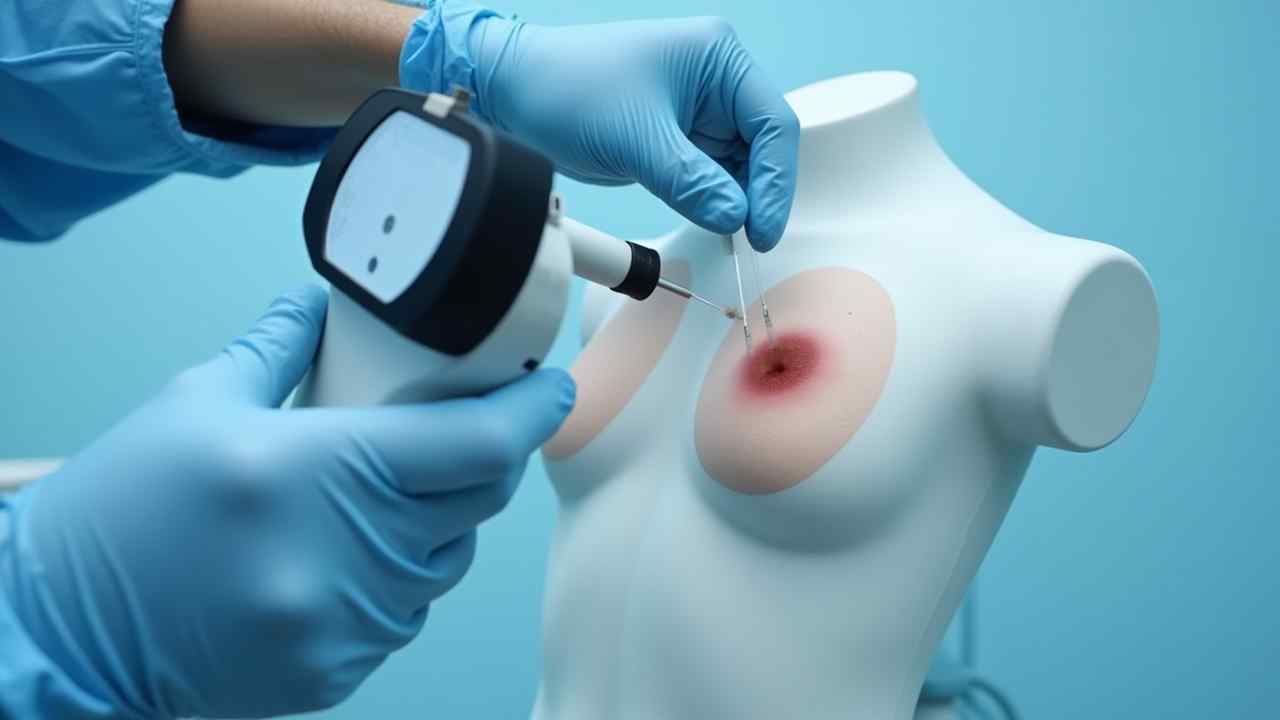
🩺 Skin Cancer on the Breast: A Doctor's Guide to Signs & Symptoms
🩺 Skin Cancer on the Breast: A Doctor's Guide to Signs & Symptoms 🩺
❗ CRITICAL MEDICAL ADVISORY: If you have found a new, changing, or unusual spot on the skin of your breast, you must see a board-certified dermatologist for an evaluation. This guide is for informational purposes only and is not a substitute for a professional medical diagnosis. Do not try to self-diagnose.
Finding a new spot on your breast can be alarming. It is important to know that skin cancer can develop on any part of your body. This includes the skin of the breasts, chest, and nipple area. Early detection is the key to successful treatment.
This guide will explain the difference between skin cancer and breast cancer. We will cover the types of skin cancer on the breast. We will also review the signs you should look for. Let's explore this important health topic. ⚠️
🤔 Is Skin Cancer on the Breast the Same as Breast Cancer?
No. This is the most important distinction to understand. They are two completely different diseases. They arise from different cells and are treated by different specialists.
Skin cancer develops from the cells in your skin (the epidermis). It is treated by a dermatologist. The main cause is typically exposure to ultraviolet (UV) radiation from the sun or tanning beds.
Breast cancer develops from cells within the breast tissue itself. This includes the milk ducts or lobules. It is treated by an oncologist. Its causes are complex and are not related to sun exposure.
It is crucial to get a proper diagnosis from a doctor. They can determine the exact nature of any lump or skin lesion. This is the only way to ensure you get the right treatment.
🔬 What Are the Types of Skin Cancer Found on the Breast?
The same types of skin cancer that appear elsewhere on the body can also appear on the breast. The three most common types are:
- Basal Cell Carcinoma (BCC): This is the most common form of skin cancer. It rarely spreads to other parts of the body. It might look like a pearly bump, a pink patch, or a sore that does not heal.
- Squamous Cell Carcinoma (SCC): This is the second most common type. It may appear as a firm red bump, a scaly patch, or a sore that repeatedly heals and re-opens.
- Melanoma: This is the most serious form of skin cancer. If not caught early, it can spread to other organs. It often develops in or looks like an unusual mole.
🔍 How Do You Check for Skin Cancer on the Breast? (The ABCDEs of Melanoma)
Regular self-exams are vital. When checking the skin on your breasts, look for any new or changing spots. The ABCDE rule is a helpful guide for identifying the warning signs of melanoma. This is a key part of monitoring for skin cancer on the breast.
- A for Asymmetry: One half of the mole or spot does not match the other half.
- B for Border: The edges are irregular, scalloped, or poorly defined.
- C for Color: The color is not the same all over. It may have shades of brown, black, pink, red, or even blue.
- D for Diameter: The spot is larger than 6 millimeters across (the size of a pencil eraser). However, melanomas can be smaller when first detected.
- E for Evolving: The mole or spot is changing in size, shape, color, or is a new symptom like bleeding or itching.
⭐ What Should You Do if You Find a Suspicious Spot?
The answer is simple and urgent. Make an appointment with a board-certified dermatologist. Do not wait to see if it changes. Do not try to diagnose it yourself using online pictures.
A dermatologist can examine the spot with a special tool called a dermatoscope. If it looks suspicious, they will perform a simple biopsy. This is the only way to get a definitive diagnosis. It is a quick and easy procedure.
Early detection of skin cancer on the breast, especially melanoma, is the key to a successful outcome. When in doubt, get it checked out. It is the most important step you can take for your health. 🩺